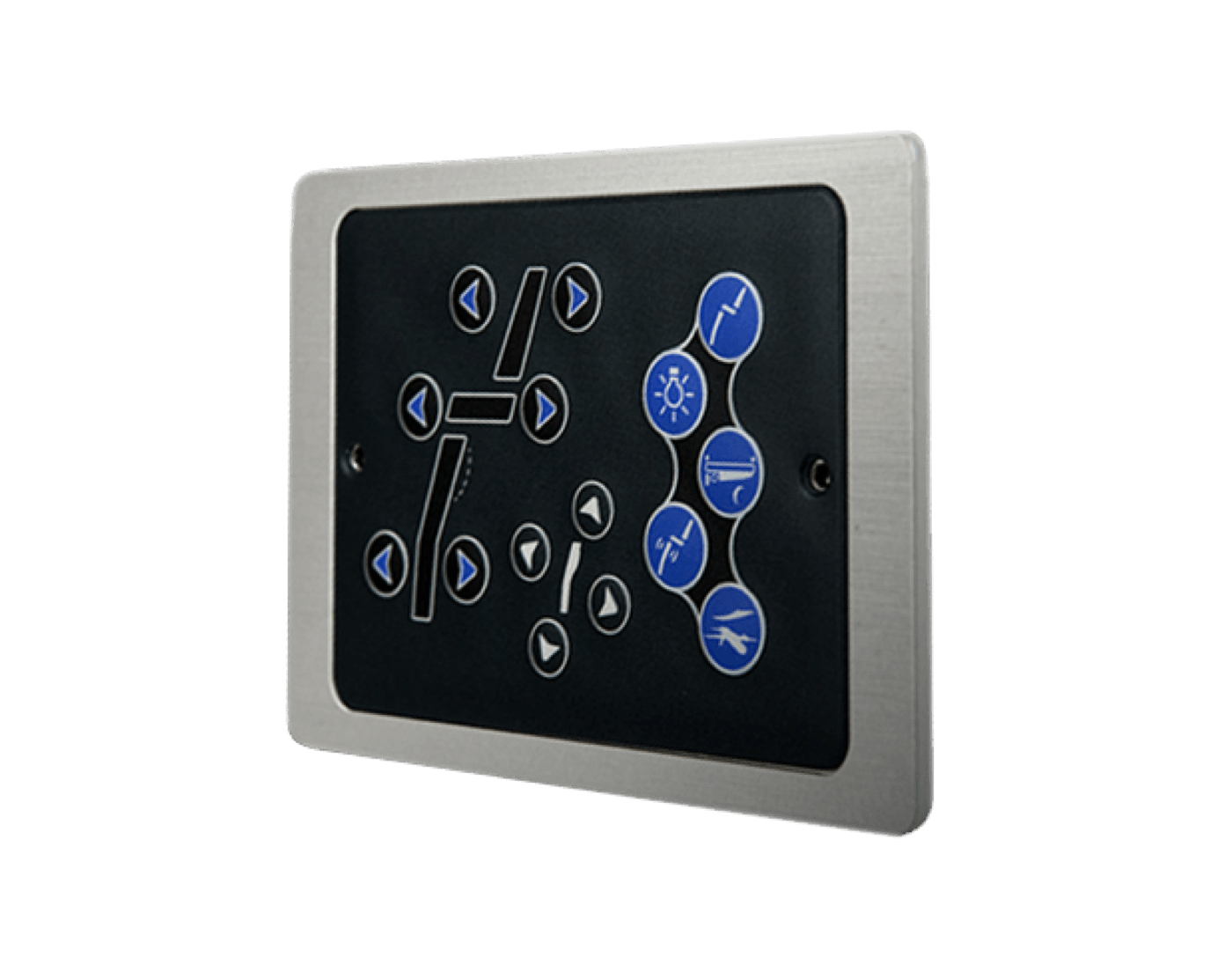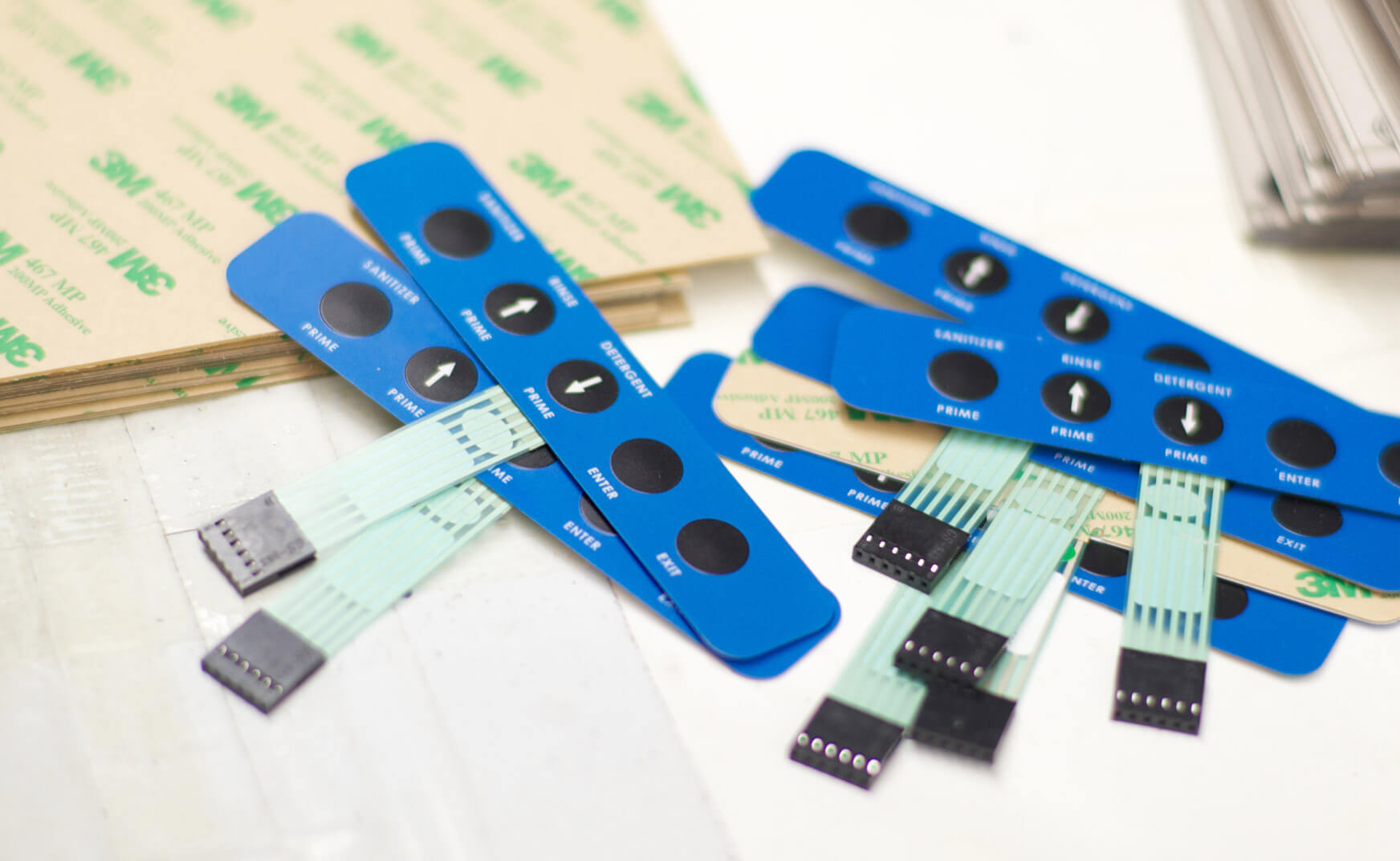How Membrane Switches Ensure Reliable and Longevity in Electronics
How Membrane Switches Ensure Reliable and Longevity in Electronics
Blog Article
Membrane Layer Switch Modern Technology: The Secret to Trustworthy and Cost-Effective Interfaces
Membrane switch modern technology has arised as a crucial part in the design of individual interfaces, giving both reliability and cost-effectiveness throughout a varied variety of applications. As we discover the diverse benefits of membrane layer switches, their possibility for advancement elevates questions concerning future applications and progressing fads.
Comprehending Membrane Switch Over Innovation
Membrane button modern technology is a commonly utilized interface solution in various digital devices, offering a smooth blend of capability and style. This innovation includes numerous layers of products, generally containing a visuals overlay, spacer layer, and a circuit layer. The graphic overlay shows the interface components, while the spacer layer divides the circuit layer from the overlay till a user activates a button.
When stress is related to the overlay, the circuit layer finishes the electrical circuit, sending out a signal to the gadget. This system enables various configurations, including tactile comments and backlighting options, enhancing user interaction. Membrane buttons are commonly manufactured utilizing resilient products such as polyester or polycarbonate, making sure long life and resistance to environmental variables like dampness and dust.
The versatility of membrane switches allows their application in diverse sectors, consisting of medical gadgets, customer electronic devices, and commercial controls. Their portable layout permits assimilation right into space-constrained atmospheres, offering an effective customer interface without jeopardizing visual allure. Recognizing the details of membrane layer switch modern technology is essential for makers and designers looking for to create reputable and reliable human-machine user interfaces.
Trick Advantages of Membrane Switches
While numerous user interface services exist, membrane layer changes offer distinct benefits that make them a favored option in various applications. Among the main advantages is their durability; membrane buttons are created to withstand extreme ecological problems, consisting of wetness, dirt, and temperature level changes, making certain resilient efficiency. This strength considerably decreases the need for frequent substitutes, therefore lowering general upkeep prices.

Furthermore, membrane layer buttons are lightweight and small, making them appropriate for applications where space is limited. Their low-profile layout adds to a sleek look without jeopardizing capability.
Cost-effectiveness is additionally a significant advantage, as the manufacturing procedure for membrane switches over tends to be much less costly compared to traditional mechanical switches. This cost, integrated with their reliability and simplicity of installment, positions membrane switches as a sensible service for a vast array of industries seeking efficient and effective interface.
Applications Throughout Different Industries
How do membrane switches adjust to the varied demands of various sectors? Membrane button technology is increasingly acknowledged for its versatility, making it suitable for a large range of applications throughout multiple sectors. In the clinical field, membrane layer buttons are made use of in analysis tools and individual tracking devices, where their toughness and simplicity of cleansing are vital for keeping health criteria. The vehicle sector utilizes Read Full Report these switches in control panels and control panels, providing a streamlined aesthetic while ensuring user-friendly procedure.
In consumer electronic devices, membrane switches provide read the article a small service for remotes and home devices, improving individual experience with intuitive layout. In addition, the commercial market leverages membrane buttons for equipment control board, taking advantage of their resistance to extreme atmospheres, such as wetness and dirt.
Army and aerospace applications likewise make use of membrane buttons for their reliability and capacity to endure severe problems, making sure functional efficiency in critical circumstances. The food and beverage industry adopts these switches for automated systems, where cleanliness and simplicity of operation are extremely important (membrane switch). Ultimately, membrane switches are tailored to fulfill the unique needs of each industry, proving their crucial duty in modern technology interfaces
Layout and Personalization Alternatives

In the realm of membrane layer button technology, style and personalization choices play a crucial duty in enhancing functionality and customer interaction. These switches can be customized to meet certain functional demands and visual preferences, making them versatile parts in various applications.
One of the main modification choices is the layout of the button itself, which can be made to suit unique interface and ergonomic factors to consider. By changing the form, dimension, and setup of switches, makers can develop intuitive layouts that facilitate ease of usage. In addition, the consolidation Full Report of different colors and visuals overlays enables branding and enhanced visibility, making sure that individuals can swiftly recognize functions.
Furthermore, membrane layer buttons can be crafted with numerous tactile comments systems, such as increased buttons or audible clicks, to improve the individual experience. Different products can also be chosen for sturdiness and environmental resistance, addressing variables such as wetness, temperature changes, and chemical exposure.
Ultimately, the extensive style and personalization options offered in membrane layer button innovation empower organizations to develop customized services that not only fulfill useful needs but also line up with their branding and operational demands.

Future Patterns in Membrane Layer Buttons
As membrane button modern technology proceeds to evolve, future trends are significantly concentrated on enhancing customer experience and incorporating advanced capabilities. One considerable trend is the combination of touch-sensitive and capacitive technologies into standard membrane buttons. This development enables even more user-friendly user interfaces, providing tactile feedback while keeping a streamlined layout.
An additional arising fad is the use of eco pleasant materials, driven by the expanding need for lasting production practices. Suppliers are seeking to minimize their carbon impact by utilizing recyclable substratums and low-impact inks, straightening with global sustainability goals.
Additionally, the rise of the Web of Points (IoT) is triggering the consolidation of wise features into membrane layer buttons. Enhanced connection options will certainly allow tools to connect with each other, permitting seamless integration into wider systems.
In addition, innovations in printing innovations, such as digital printing, are enabling greater design flexibility and personalization. This makes it possible for suppliers to produce elaborate designs and lively colors cost-effectively.

Final Thought
To conclude, membrane button innovation represents an essential technology in interface layout, providing considerable advantages in sturdiness, modification, and cost-effectiveness. Its extensive applicability throughout varied markets emphasizes its importance in modern technology. As advancements remain to arise, especially in touch-sensitive user interfaces and lasting materials, the possibility for membrane layer switches over to boost user experience and functionality continues to be appealing. Continued exploration of this modern technology will likely generate even more improvements and broaden its extent in future applications.
Report this page